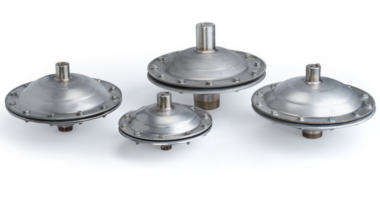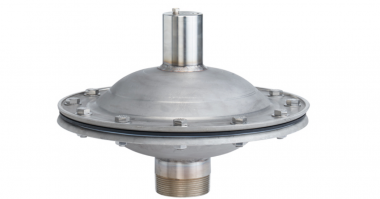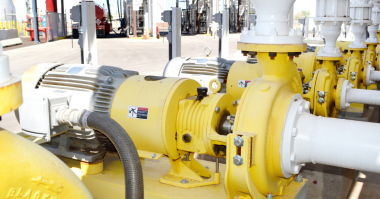In this edition of the Centrifugal Pump Minute, James Farley, Senior Director of Product Management for Griswold, goes through how a centrifugal pump is constructed and illustrates how the pump operates.
Now without a little bit of history, I wanted to go through how a centrifugal pump is constructed. There are some variations and differences this particular one is going to be for a close-coupled end suction pump. There are different centrifugal pump designs. We’ll talk about those a little bit, but they all, in the end, perform very similarly. In this particular pump, you have suction, there’s a flange on the end of the pump where the fluid would enter the pump, and then there’s a discharge. On this one, it is a radial discharge pump. There’s a flange going off to the side where the flow is going to exit the pump. Essentially, you’re going to have fluid going in at a lower pressure. Then, you’re going to have in centrifugal pump terms head you’ll have fluid exiting the pump at a higher head.
Now to look at more of the internals and what’s actually happening inside the pump. We’re going to cut away part of the casing so you can see internal to this pump. Then we’re going to take a portion of the impeller, which is called the front shroud, and we’re going to make that transparent so you can actually see the vein geometry of the impeller sitting behind that shroud. What you see here is now a cutaway from the center of the pump. When a pump is operating, the impeller is going to be rotating. Notice the direction of the arrows and the kind of curvature of the impeller veins. Some people have a perception that the vein of the impeller would rotate, at least from this image, in a clockwise direction. That’s not the case, the impeller has to rotate in a counterclockwise direction.
The veins of the impeller flicker or throw the fluid and through kinematic energy. The impeller is going to rotate. It’s going to be driven by some sort of a rotating shaft. That shaft has to be powered by some sort of an engine or drive. It could be an electric motor, a diesel drive, a hydraulic motor, or a variety of things. When that impeller is rotating, it’s going to start to accelerate the fluid. This energizes the fluid. That energy creates what’s considered head in the fluid. That’s increased pressure inside the fluid. That fluid that was in the impeller is now going with higher energy through centrifugal force. It’s going to end up getting thrown radially outside of the impeller into the casing. That energy accelerates that fluid, causing it to go outward radially into the casing geometry. That geometry is called a volute geometry that collects that fluid and starts directing it. The fluid is then going to the casing then is going to collect the fluid is going to slow down the fluid. It’s actually through Bernoulli’s principle that the fluid needs to slow down to generate a higher head. That fluid is going to collect and get sent out of the discharge of the case. It will essentially have a very high head as the fluid exits through the discharge nozzle. To replenish the fluid that’s been pushed out of the casing we need to be pulling more fluid into the suction of the pump and so as the pump is operating. The fluid moves into the impeller because you have a low-pressure region generated at the inlet of the impeller. That low pressure is what will start to suck that fluid into the impeller or the pump and therefore continue the pumping action of the centrifugal pump. Again you’re going to have fluid that moves from the impeller and into this low-pressure zone at the impeller eye and then that’s going to pull that fluid through and around in the centrifugal pump. By doing this you’re getting a continuous flow that’s going through the centrifugal pump and that one of the advantages of a central pump is that the flow is very stable steady, you don’t have pulsation in the discharge or on the suction line when you’re operating a centrifugal pump.
Watch more Centrifugal Pump Minute videos.




Comments